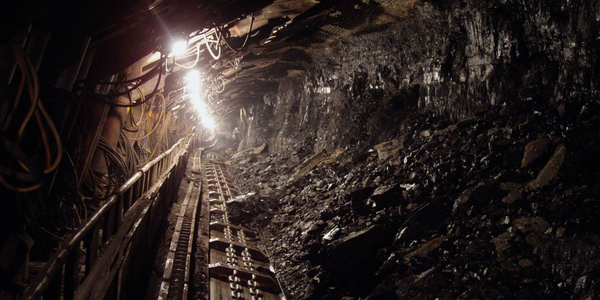Enhancing Customer Experience with Haptik’s Omnichannel Solution: A Case Study on IIFL Holdings Limited

Use Cases
- Chatbots
- Onsite Human Safety Management
About The Customer
IIFL Holdings Limited is a leading diversified financial services company in India. It caters to a large customer base of over four million individuals across various business segments. The company was looking for an effective and cost-efficient solution to enhance the overall customer experience by providing faster query resolution. The company's vast customer base has demonstrated a favorable response to Haptik's chatbot, utilizing it to gain insights on credit and investments, and receive prompt support.
The Challenge
IIFL Holdings Limited, a leading diversified financial services company in India, was grappling with the challenge of managing a high influx of customer support queries from its large customer base of over four million individuals. The company was seeking an effective and cost-efficient solution to enhance the overall customer experience by providing faster query resolution. The growing number of customer queries was putting a strain on their call center operations, leading to higher operational costs. Even low-touch, basic queries were subject to delays in receiving support. The objective was to free up human agents from addressing low-touch queries, thereby enabling them to focus on resolving more complex queries. The goal was to minimize the necessity of human intervention and decrease the potential for errors.
The Solution
To address these challenges, IIFL collaborated with Haptik to create a chatbot capable of delivering prompt customer responses and enhancing overall customer experience. The primary purpose of the IIFL chatbot was to offer swift solutions to frequently asked questions such as Trading Report, Balance and Transfer, Brokerage Calculators, and more. Through the implementation of Haptik's chatbots, IIFL could achieve faster and more precise query resolution, leading to an overall improvement in customer satisfaction. Moreover, this initiative allowed IIFL to minimize their dependence on call centers and optimize their operational expenses. The chatbot led to a reduction in operational expenses and enhanced customer satisfaction.
Operational Impact
Quantitative Benefit

Case Study missing?
Start adding your own!
Register with your work email and create a new case study profile for your business.
Related Case Studies.

Case Study
Wearables for Connected Workers
Together, Honeywell and Intel have developed a IoT proof of concept (PoC) for the Connected Worker. The Connected Worker can take many forms - factory laborer, mine worker, first responder, firefighters and more. For each environment and worker role, a different selection of sensors may be appropriate to provide the most meaningful IoT-fueled dataset to represent that individual worker asset. As with most IoT solutions, it is critical to avoid being overwhelmed by a steady stream of meaningless data. Rather, it is essential to send select actionable intelligence to the cloud for visualization and customized alert notifications. The downside is that data from individual wearable devices - if viewed independently - can potentially cause false alarms and contribute to inefficiencies in a manpower as a result. Fusing sensor technology with big data processing (hub/gateway), analytics - all in the cloud - is the key to improving local intelligence as well as remote visualization of actionable intelligence.

Case Study
Underground Mining Safety
The goal was to produce a safety system to monitor and support underground mining operations; existing systems were either too simple (i.e. phone line) or overly complex and expensive, inhibiting deployment, and providing little-to-no support in event of an accident. Given the dangerous nature of the mining work environment and the strict regulations placed on the industry, the solution would have to comply with Mine Safety and Health Administration (MSHA) regulations. Yet the product needed to allow for simple deployment to truly be a groundbreaking solution - increasing miner safety and changing daily operations for the better.

Case Study
Facility Management Solution in Construction Industry
In the construction of Crown Towers in Perth, hundreds of workers enter and exit the construction site each day, totalling into thousands by the completion of the project. All of these workers perform different tasks and come from different agencies, making it difficult for supervisors to track who does what, when, and where on such a large-scale site. An easy-to-use access, security and facility management solution was required.

Case Study
Industrial Workforce Mobility for Improved Safety & Operations
Huntsman Corporation, a global manufacturer and marketer of differentiated chemicals, undertook an aggressive program to eliminate injuries, product defects, and environmental releases at their Port Neches facility. Termed “Project Zero”, this program required a completely mobile solution to empower operations and maintenance personnel to capture defects, track work progress and make process and safety related decisions in real-time.

Case Study
Improving Factory Worker Posture
A 49 year old factory worker with long-standing low back pain was referred to a ViMove clinic for assessment and treatment. The worker’s low back pain had been managed and resolved with acupuncture in the past. The patient reported severe low back pain worse in the morning after prolonged rest. He also had trouble straightening up and experienced constant stiffness and pain.

Case Study
WEST TEXAS GAS TRUSTS WIN-911 ALARM NOTIFICATION SOFTWARE
It became clear that the SCADA system was not an infallible means ofmonitoring field stations; the systems would sometimes lose connection with the host computer. This caused delays in personnel response to alarms and increased the risk of severe warnings not being received before corrective actions could be implemented. As a precaution, the alarm points had to be visually monitored and staff would be required to call the appropriate personnel if an alarm came through. Regulations wereestablished for timely reporting. The management at West Texas Gas quickly determined that a secondary alarm support system needed to be installed. They were seeking something that would be able to monitor variable tags from the OPC server as well as monitor custom tags that were built into the existing SV32 SCADA system to observe and report flare volumes.






